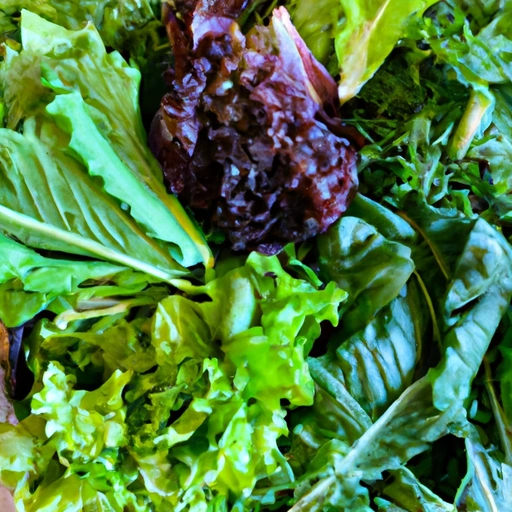Salad Greens
Description

Salad greens encompass a wide variety of leafy vegetables that are commonly used in salads and other dishes. These greens can range from the crisp and mild iceberg lettuce to peppery arugula (rocket), tender spinach, and robust kale. Each type of green offers a unique texture and flavor profile, making them versatile ingredients in the culinary world. Salad greens can be eaten raw or cooked and provide a fresh, nutritious component to meals.
Common uses
Salad greens are primarily used in fresh salads, whether as a simple side dish or a more elaborate entrée salad. They can also be incorporated into sandwiches, wraps, and as a garnish for various dishes. In some cuisines, greens are lightly sautéed or wilted as a warm side dish or mixed into soups and stews.
Nutritional value
Calories
Salad greens are generally low in calories, with a typical serving of mixed greens containing about 20 calories (83.68 joules) per 2 cups (approximately 85 grams or 3 ounces).
Protein
While not high in protein, salad greens can contribute a small amount to your daily intake, with roughly 2 grams per 2 cups serving.
Fat
Salad greens are naturally low in fat, with less than 1 gram per serving. However, the fat content can increase depending on dressings or additions like nuts and cheese.
Carbohydrates
Most salad greens are low in carbohydrates, with an average of 3 grams per 2 cups serving.
Vitamins
They are an excellent source of vitamins, particularly vitamins A, C, and K, as well as folate. The exact amounts can vary based on the specific type of green.
Minerals
Salad greens provide essential minerals such as potassium, calcium, and magnesium, with the amounts varying among different greens.
Health benefits
Consuming salad greens can offer numerous health benefits, including improved digestion due to their high fiber content, a boost to the immune system from their vitamins and antioxidants, and support for bone health from their calcium and vitamin K. They can also aid in weight management due to their low calorie and high water content.
Potential risks
While salad greens are generally considered safe and healthy, they can pose risks if not properly washed, as they may harbor bacteria like E. coli. Additionally, individuals taking blood thinners should manage their intake of greens high in vitamin K, like kale and spinach, as they can affect blood clotting.
Common recipes
Salad greens are featured in a multitude of recipes, including Caesar salad, spinach salad, mixed green salads, and more.
Cooking methods
Although often eaten raw, greens can also be steamed, sautéed, or incorporated into cooked dishes like quiches and stir-fries.
Pairing with other ingredients
They pair well with a variety of dressings, fruits, nuts, proteins, and grains, offering endless possibilities for creative dishes.
Summary
Salad greens are a nutritious and adaptable food ingredient that can be utilized in countless recipes worldwide. With their rich history, diverse applications, and health benefits, they are an invaluable component of a balanced diet. From raw, crisp textures to cooked, tender leaves, salad greens enhance flavors and enrich meals with essential nutrients.